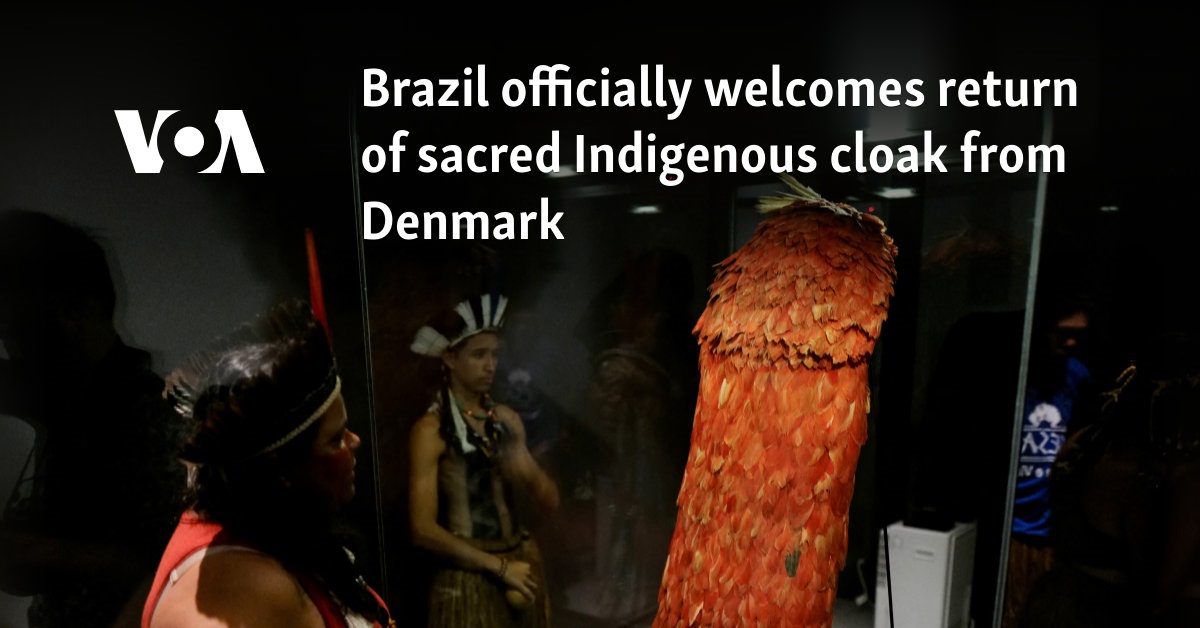This website uses cookies so that we can provide you with the best user experience possible. Cookie information is stored in your browser and performs functions such as recognising you when you return to our website and helping our team to understand which sections of the website you find most interesting and useful.


Brazil formally received on Thursday the return from Denmark of an Indigenous cloak made with 4,000 red feathers of the scarlet ibis bird, a sacred mantle that was taken by Europeans during the 17th century colonial era.
President Luiz Inacio Lula da Silva attended the ceremony outside Brazil's National Museum in Rio de Janeiro, marking the importance that Brazil gives to the item's repatriation.
The cloak, a feathered ceremonial cape used in religious rituals of the Tupinamba people of Bahia in northeastern Brazil, was removed during the Dutch occupation of the area.
Its first mention comes in a Danish inventory in 1689, although it is thought to have been taken from Brazil some 50 years before.
By the 21st century it was held in the ethnographic collection of Denmark's National Museum, the Nationalmuseet. In 2000, the museum lent the cloak out for an exhibition in Sao Paulo.
A Tupinamba leader saw it there and demanded its return. Last year, after lengthy diplomatic negotiations, the Danish museum announced it would donate the cloak to Brazil's National Museum, and it was repatriated in July.
Some 170 Tupinamba traveled from southern Bahia to Rio to celebrate its return.
"It is crucial they return what isn't theirs and rightfully belongs to us. Our heritage strengthens our identity," said cacique, or chief, Jamopoty Tupinamba to Agencia Brasil on Wednesday.
From the first Portuguese voyages to Brazil in the early 16th century, Indigenous cultural items were taken to Europe as evidence of the "discovery" of new territories and then entered museums or private collections.
A fresco painted in 1674 on the ceiling of the Apollo Salon at the Palace of Versailles, the king's throne room, depicts newly found America as a woman wearing a Tupinamba cloak as if it were a headdress.
According to cultural heritage activist Gliceria Tupinamba, there are another 10 such cloaks in Europe, held in museums and libraries in Italy, France, Belgium, Switzerland and Denmark, where the National Museum still has one large and three partial ones.
"It took more than 20 years to get the cloak back. Its return is a symbol of the protection of our cultural and land rights that are under threat today in Brazil," she said.



 Africana55 Radio
Africana55 Radio 
